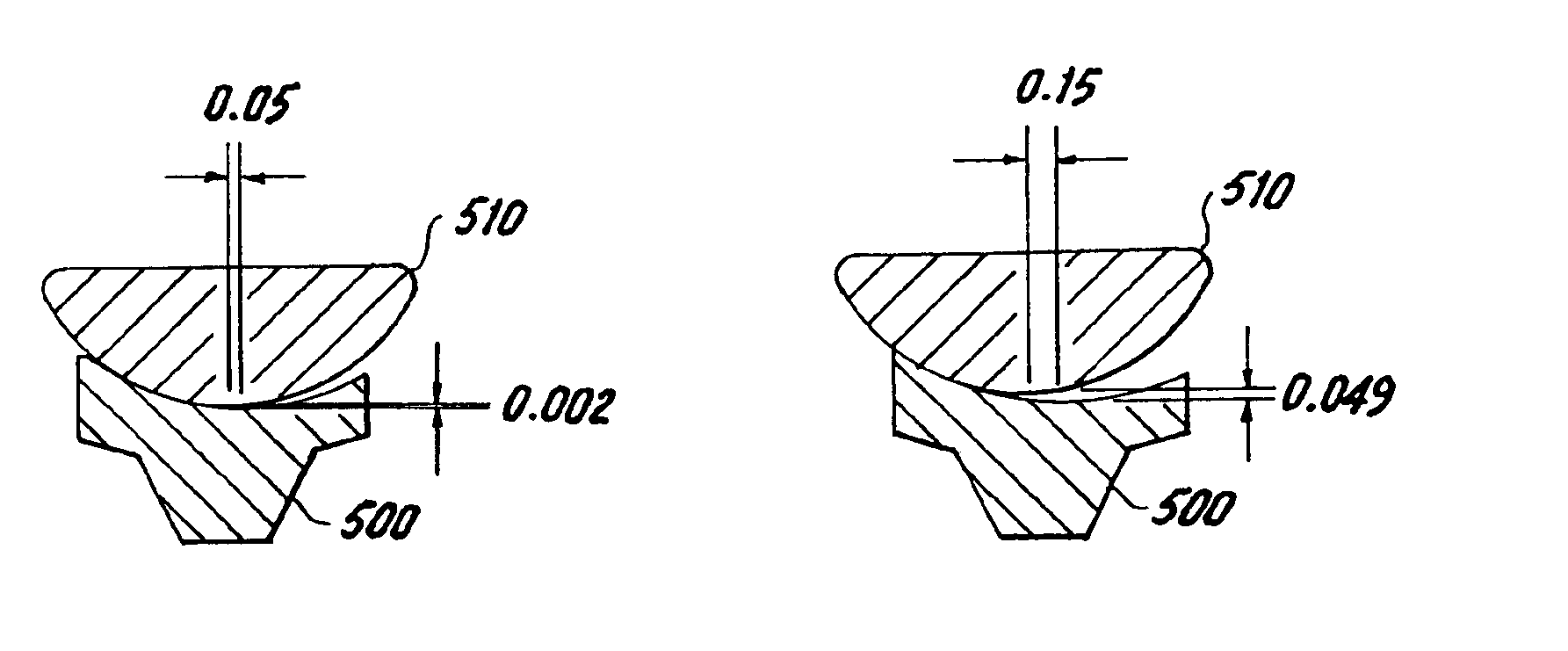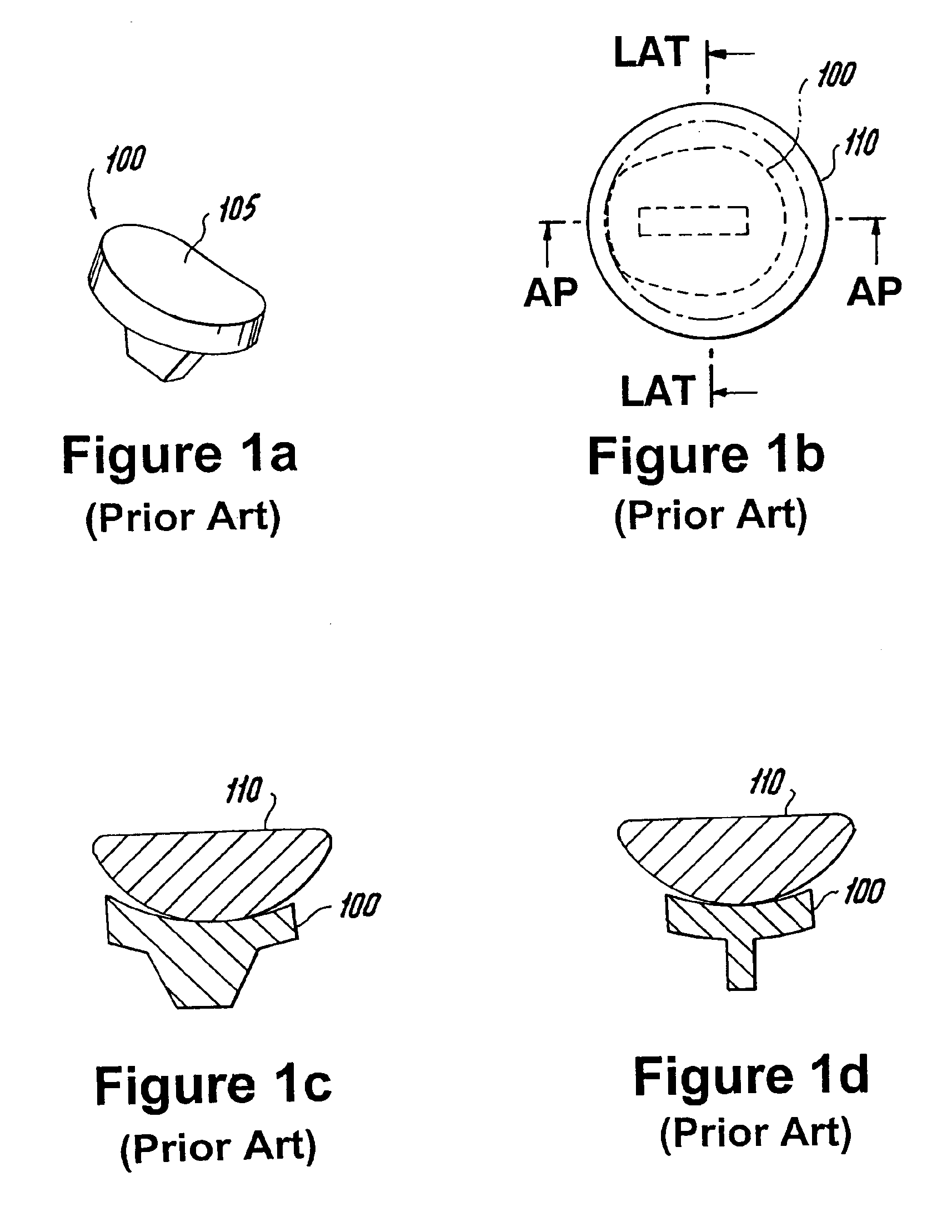Dual-radius glenoid prosthetic component for total shoulder arthroplasty
a glenoid and total shoulder technology, applied in the field of total shoulder arthroplasty, can solve the problems of reducing the ability of the glenoid component to withstand lateral forces, affecting the lateral force of the glenoid joint, so as to reduce the load transferred to the bone-implant interface, reduce the constraint, and reduce the constraint on the articulating surfa
- Summary
- Abstract
- Description
- Claims
- Application Information
AI Technical Summary
Benefits of technology
Problems solved by technology
Method used
Image
Examples
Embodiment Construction
FIGS. 5a-5d show an exemplary embodiment of a dual-radius glenoid component 500 in accordance with the present invention that forms part of a shoulder joint prosthesis used during total shoulder arthroplasty. Glenoid component 500 has an articulating surface 505 formed by two radii of curvature. A first, central or inner area 507 has a first radius of curvature. Surrounding the first, central or inner area 507 is a second, peripheral or outer area 506 defined by a second radius of curvature. The second radius of curvature substantially conforms with the radius of curvature of the humeral component, while the first radius of curvature does not. In addition, the first radius of curvature is greater than the second radius of curvature. In a preferred embodiment, the second radius of curvature is approximately equal to the radius of curvature of the humeral head component at approximately 1.0 inch, the first radius of curvature is between approximately 1.1 inches and approximately 1.5 i...
PUM
 Login to View More
Login to View More Abstract
Description
Claims
Application Information
 Login to View More
Login to View More - R&D
- Intellectual Property
- Life Sciences
- Materials
- Tech Scout
- Unparalleled Data Quality
- Higher Quality Content
- 60% Fewer Hallucinations
Browse by: Latest US Patents, China's latest patents, Technical Efficacy Thesaurus, Application Domain, Technology Topic, Popular Technical Reports.
© 2025 PatSnap. All rights reserved.Legal|Privacy policy|Modern Slavery Act Transparency Statement|Sitemap|About US| Contact US: help@patsnap.com



